Today we'll be looking one of the 20th century's seminal etchers, Stanley William Hayter (1901-1988).
 |
| Stanley William Hayter printing. Image courtesy of https://en.wikipedia.org/wiki/Stanley_William_Hayter |
Originally from London, Hayter started out his career in the oil industry after earning his degrees in chemistry and geology. From 1922 to 1925, he worked for the
Anglo-Persian Oil Company in Iran, until a bout with malaria forced him to return home. During this time of convalescence, he had a successful one-man show of his paintings and drawings, which may have inspired him to pursue a more artistic calling. Although he soon switched over to art, his chemical background would undoubtedly influence his later printmaking.
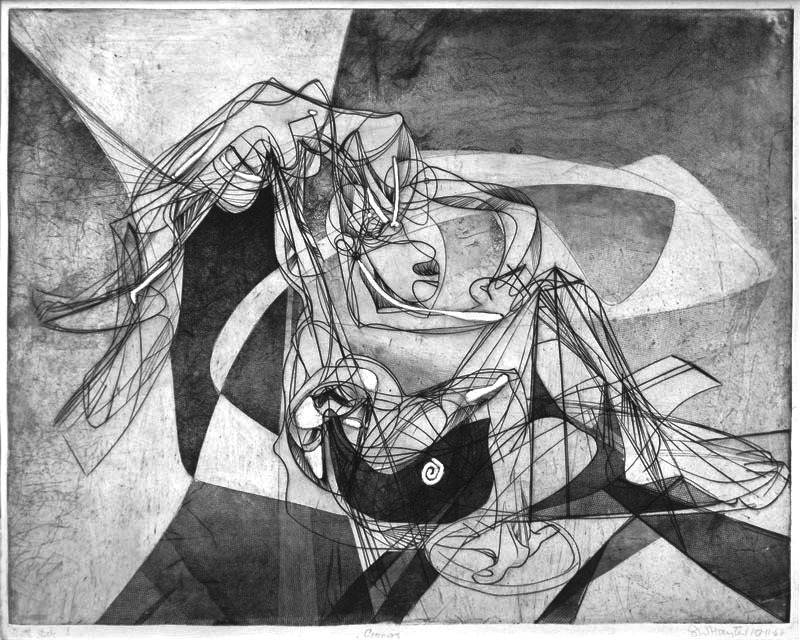 |
| Stanley William Hayter, Cronos, 1944, engraving, soft-ground etching, and scorper. Image courtesy of https://www.annexgalleries.com/inventory/detail/16365/Stanley-William-Hayter/Cronos |
In 1926, Hayter went to study at the
Academie Julian in Paris, and opened his own printmaking atelier, Atelier 17, in 1927. It was also during this time that he was introduced to Surrealism, particularly as interpreted by artists such as
Yves Tanguy and
Andre Masson. Their aesthetic would have a great impact on Hayter's own art. During the 1930s in particular, his work has an aggressive, even violent character, with much of his work responding to the
Spanish Civil War and the subsequent rise of Facism.
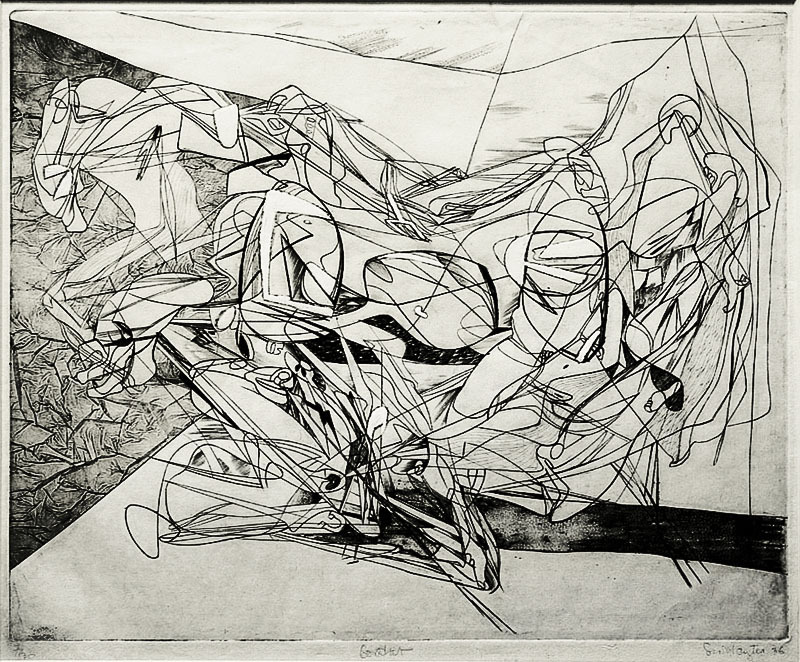 |
| Stanley William Hayter, Combat, 1936, engraving, soft-ground etching, and scorper. Image courtesy of http://www.annexgalleries.com/inventory/detail/16195/Stanley-William-Hayter/Combat |
Hayter relocated to New York during World War II, but returned to Paris in the 1950s, where he reopened his studio. After the war, his work retained its distinctly abstract character, with its particular emphasis on clean, sinuous lines, reflecting his earlier training in engraving. During his later career, he focused on color printing, and devised new ways to create complex color prints from a single plate. The most notable of these is
viscosity printing, in which color inks of different viscosities were layered onto a single plate, allowing the artist to print multiple colors on a single plate.
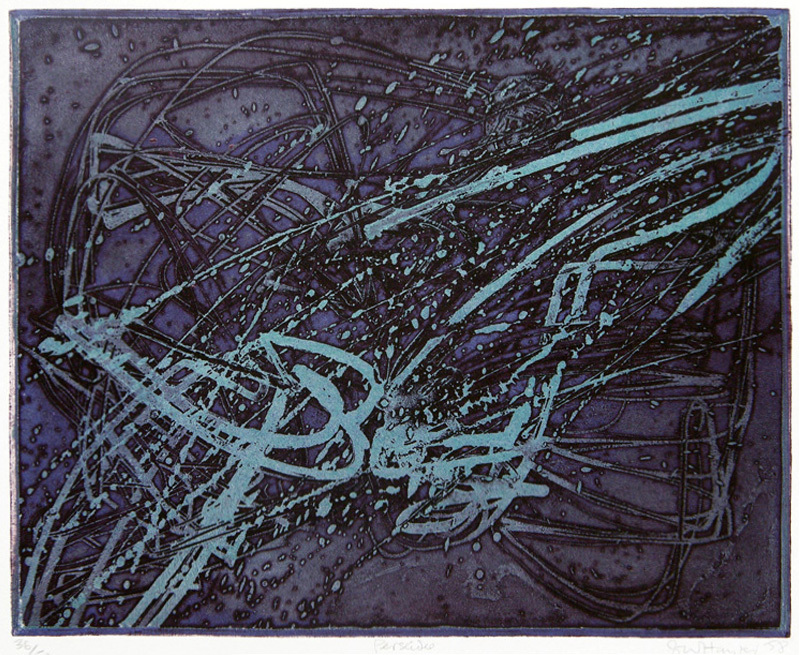 |
| Stanley William Hayter, Perseids, 1958, color etching. Image courtesy of http://www.annexgalleries.com/inventory/detail/17271/Stanley-William-Hayter/Perseides |
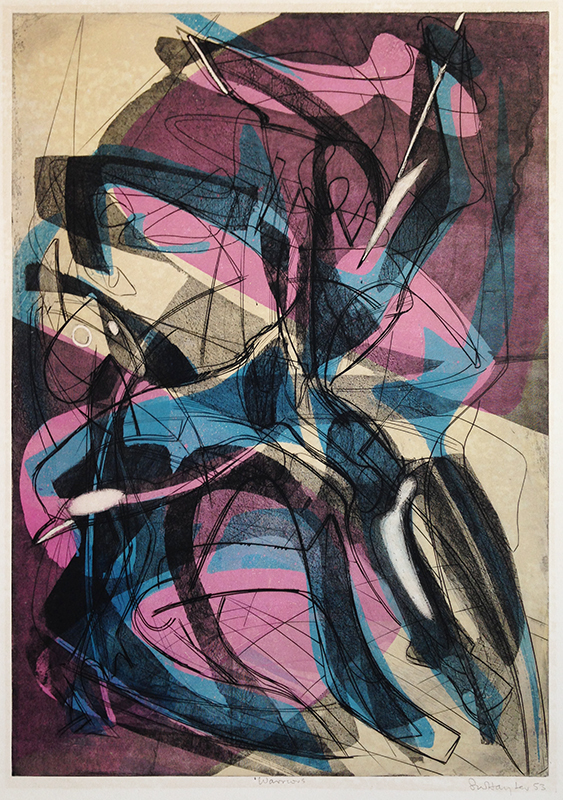 |
| Stanley William Hayter, Warriors, 1953, color engraving, soft-ground etching and scorper. Image courtesy of https://www.annexgalleries.com/inventory/detail/11240/Stanley-William-Hayter/Warriors-Guerriers. |
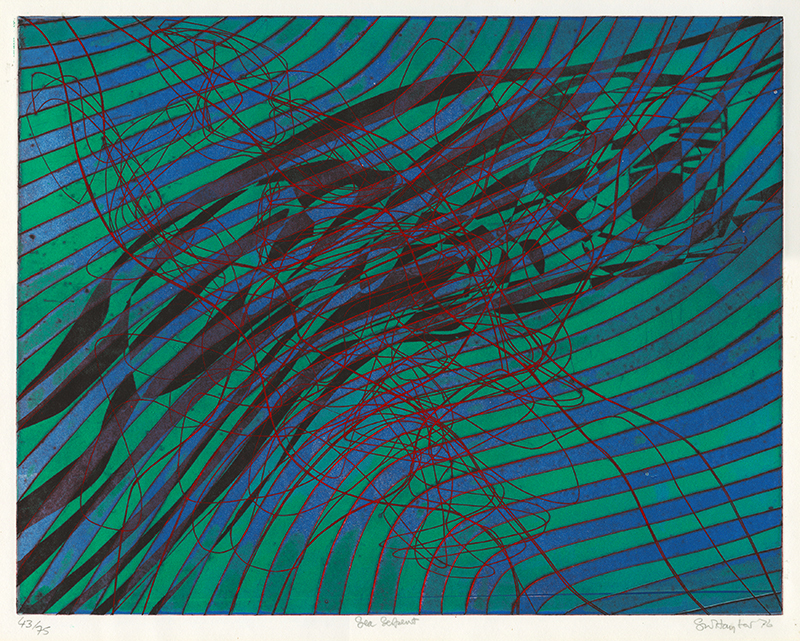 |
| Stanley William Hayter, Sea Serpent, 1976, engraving, etching, soft-ground etching, printed in color. Image courtesy of https://www.annexgalleries.com/inventory/detail/KaAn101/Stanley-William-Hayter/Sea-Serpent |
In addition to his own work, Hayter is important for the impact he had on other artists. As a printmaker, Hayter was a technical master, and published two books that would become important resources to other printers for many years:
New Ways of Gravure, published in 1949, and
About Prints, published in 1962. Atelier 17 also played a seminal part in the world of modern art. It was a place where Surrealist and Abstract Expressionist artists in particular could go to study the world of printmaking, and it was one of the most experimental workshops of its time. His emphasis on automatic processes would be especially appealing to the Abstract Expressionists. Some of the artists to pass through its doors include
Jackson Pollock,
Pablo Picasso,
Marc Chagall, and
Alberto Giacometti, among many others.
Another artist who developed both his craft and aesthetic there was Roderick Mead, a printmaker you will get to know next month.
Want to learn more? Here are some sites for you:
http://www.tate.org.uk/art/artists/stanley-william-hayter-1257
https://www.annexgalleries.com/artists/biography/980/Hayter/Stanley
https://www.nga.gov/exhibitions/hayterinfo.shtm
http://www.ateliercontrepoint.com/a171.html






Comments
Post a Comment
Questions? Comments? Speak your mind here.